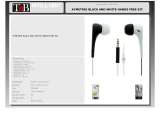
10 Ellesmere & Ludlow Wide Model ECGW – Fuel Type Natural Gas
Health & Safety
To prevent the stove from tipping forward when the cast door is open & the flue pipe being
pulled off the flue collar
Additional Mandatory Requirements:
Fitting the Rear Chain - During the stove installation process, this stove requires a chain fitting to the
rear of the stove as per the following detailed instructions and a “screw in eye” secured into a suitably
solid wall directly behind the stove using the enclosed wall fixing for solid brickwork. A different wall
fixing would be required for a cavity plasterboard wall which is not supplied as part of this kit
When fitted correctly this will prevent the stove from tipping forward when the door is in the open position
The full installation kit for this is included inside the stove and consists of:
Chain with Snap Hook fitted to the end of the chain
Screw in Eye and wall fixing
Washer (used when screwing the chain onto the back of the stove, with the back panel flange
fixing already on the back of the stove holding the back panel in place
This chain is set up, so it can be used at its maximum length to achieve the 350 mill length required
behind the stove when the stove is fitted in front of a combustible wall/material and then you would
shorten the chain with the snap hook when fitting in front of a non-combustible wall down to the
minimum distance of 100mm from the rear of the stove to the non-combustible wall
Drilling the Flue Pipe for the 2 x Locking Screws - Additionally as a mandate we require the flue pipe
once finally fitted (regardless of whether the flue exits from the top of the stove or the rear of the stove to
be drilled from either side into the flue collar and a self-tapping screw (size No.8 x 10mm long – pan
head stainless steel posi drive) - one each side to be screwed into place so the flue pipe cannot be
pulled off the flue collar. See position of screw overleaf on diagram
When drilling the two holes into the Black coloured flue pipe we recommend putting masking tape
around the flue pipe where you wish to drill it first, then marking the 2 x hole positions, then using a
metal drill bit, drilling through the masking tape this will help to prevent any scratching of the black flue
pipe
The flue pipe and flue collar are manufactured from stainless steel when drilling only drill through the
outer skin of the flue pipe and the first outer layer (fresh air part of the concentric flue) of the flue collar
so the drill is only going in a maximum of 10 mill depth, therefore the inner exhaust flue cannot be
damaged. Please note do not drill into the exhaust pipe of the concentric flue, this is the 100mm
inner section of the flue pipe where the exhaust gases are removed
Then place a small amount of high temperature sealant onto the screws before screwing them in fully to
ensure an air tight seal is achieved, then finally fully test the flue for its integrity and the locking bands
are all fitted correctly on all joints
If you are fitting the flue to the top of the stove there is a convection cavity below the lid so the 2 x
locking screws can be fitted in here, below the lid so they are not seen. But this will involve lifting the lid
up to drill and 2 x holes then fit the 2 x self tapping screws then lowering the lid without scratching the
flue pipe
When fitting the flue out of the rear of the stove, the 2 x fixing screws at the rear can be fitted on the
outside of the back panel plate as they are not seen, but they must be drilled and fixed into the flue
collar, but again just the 150.mm outer collar of the 2 piece flue collar























